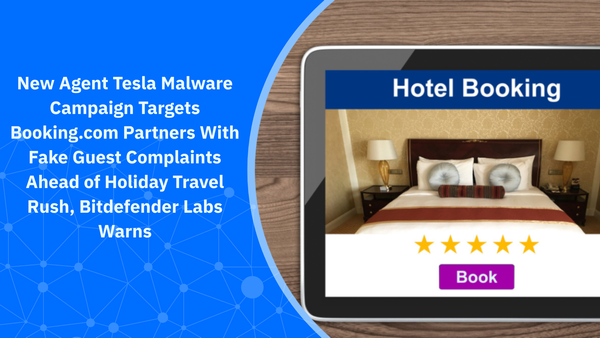How Deepfakes Can Target Businesses Like Yours

According to a study carried out by Business.com, over 10% of US companies have experienced successful or attempted deepfake fraud. The study surveyed 244 CEOs, C-suite executives, presidents, and vice presidents. 61% of the business leaders mentioned that their companies hadn't established protocols to address the risks associated with deepfake technology, and less than half confirmed that their employees had received training to deal with these risks. Additionally, 32% of respondents have no confidence in their staff's ability to recognize such fraud attempts. Surprisingly, a quarter of the executives admitted to having little to no familiarity with deepfake technology. As a business owner, you might be wondering how this relates to you. The truth is that deepfakes can target businesses of any size, not just big corporations
What Are Deepfakes and Deepfake Fraud?
Deepfakes are videos, images, or audio files created using artificial intelligence (AI) to make it appear as though someone (you or someone representing a company)is doing or saying something they never did. These AI-generated forgeries can be incredibly realistic, making it hard to tell what's real and what's fake.
Deepfake fraud is when people use this technology to scam others, manipulate information, or harm a person or business. With just a few clicks, someone could make a fake video of a CEO giving instructions to transfer money or a phony audio clip of a key employee sharing sensitive information.
Scammers can use deep fake technology in various ways:
- Scams and fraud on social media platforms such as Facebook, YouTube, Twitter and Instagram
- Damaging the reputation of individuals by creating compromising videos or images
- Bypassing biometric passwords through image and sound manipulation
- Spreading fake news and disinformation
- Blackmail and extortion
- Identity theft
How Deepfakes Can Target Your Business
Deepfakes are becoming a powerful tool in the hands of cybercriminals, enabling more convincing and sophisticated attacks than ever before. Here's how they can target your business:
1. Financial Fraud: Deepfakes have taken phishing scams to a new level. With highly accurate voice or video cloning, a deepfake could trick your employees into making fraudulent payments. For example, a video message that looks and sounds like it's from you could instruct your accountant to transfer funds to a "new supplier," when in reality, the money is going straight to a scammer. Voice cloning tools can even allow attackers to verbally ask for transactions over the phone, adding another layer of deception.
2. Reputation Damage: Imagine a fake video of you or your leadership team being shared online, showing you making false statements or engaging in inappropriate behavior. This kind of deepfake could spread quickly, leading to a loss of trust among customers, partners, and the public.
3. Internal Security Threats: Threat actors can use deepfakes to impersonate employees or business partners, gaining access to sensitive information. For example, a fake video meeting might feature someone who closely resembles and sounds like your business associate, directing your team to disclose confidential information.
4. Social Engineering: Threat actors can now use AI tools to replicate behavior, communication style, and preferences. Coupled with information obtained from social engineering campaigns, they can create convincing deepfakes customized for your organization, making it more difficult for employees to detect these scams.
5. Competitive Sabotage: Deepfakes can also be used by competitors to spread false information about your business. A manipulated video may imply unethical conduct or mismanagement, harming your reputation and potentially resulting in legal issues.
Real Life Example:
A group of hackers successfully scammed €40 million from a German manufacturing company by convincing the chief financial officer (CFO) of its factory in Romania that an executive from headquarters requested the transaction. While the initial ask was delivered via email, a follow-up phone call using voice cloning technology sealed the deal and convinced the victim that the request was legitimate.
(Source: Are Deepfake Attacks an Immediate Threat or Future Concern for Organizations?)
How to Protect Your Business From Deepfakes
There is no single tool that can identify deepfakes with absolute certainty. However, there are steps your business can take to reduce the risk of falling victim to deepfake attacks.
1. Implement Verification Procedures: One of the most effective ways to prevent fraudulent transactions is by establishing strict protocols. For example, require multiple sign-offs for large payments, impose limits on how much money can be transferred at one time, and ensure funds can only be sent to verified accounts. You might also consider adding a waiting period for large transactions or using a middleman for authentication, giving you more time to verify the legitimacy of requests. Another example is if you receive a video message asking for payment, confirm it through another channel before acting.
2. Raise Awareness: While deepfakes are becoming harder to detect, training your employees to spot unusual behavior can make a difference. Educate your team on how deepfakes work, the latest fraud techniques, and how to question anything that seems off. Encourage a culture where employees feel empowered to challenge suspicious requests without fear of repercussions.
3. Use Strong Cybersecurity Solutions: Maintaining strong cybersecurity practices is essential to preventing deepfake attacks. Many deepfake scams start with an initial breach, such as credential theft through phishing emails or compromised devices. Protect your business by securing email accounts, devices, and applications. Use strong passwords, multi-factor authentication, and encryption to minimize the chances of attackers gaining access to your systems.
4. Monitor Your Online Presence: Regularly check your business's online profiles to ensure that no fake videos or false information are circulating. Tools like Bitdefender Digital Identity Protection can help monitor and protect your business's reputation online.
Bitdefender Ultimate Small Business Security is here to help you with comprehensive protection designed specifically for small businesses. Here's what it offers:
- Phishing and Email Protection: Stops phishing scams and fraudulent emails before they reach your inbox.
- Malware Defense: Keeps your Windows PCs, Macs, iPhones, Android phones, and Windows servers safe from malware, including ransomware.
- Password Manager: It helps you create strong passwords and keeps them secure.
- VPN: Provides unlimited VPN traffic to keep your remote connections safe.
- Scam Copilot: Uses AI to help your team spot scams and avoid threats while boosting your cybersecurity skills.
- Easy to Use: Features a straightforward dashboard that anyone can manage, with no IT expertise needed.
Bitdefender Ultimate Small Business Security is an easy-to-use, all-in-one, affordable solution that protects your business.
Check it out here.
tags
Author
Cristina Popov is a Denmark-based content creator and small business owner who has been writing for Bitdefender since 2017, making cybersecurity feel more human and less overwhelming.
View all postsRight now Top posts
Cybercriminals Use Fake Leonardo DiCaprio Film Torrent to Spread Agent Tesla Malware
December 11, 2025
Genshin Impact Scam Alert: The Most Common Tricks Used Against Players
December 05, 2025
How Kids Get Automatically Added Into WhatsApp Groups with Horrific Imagery Without Consent
November 24, 2025
Scammers Exploit Hype Around Starbucks Bearista Cup to Steal Data and Money, Bitdefender Antispam Lab Warns
November 18, 2025
FOLLOW US ON SOCIAL MEDIA
You might also like
Bookmarks









